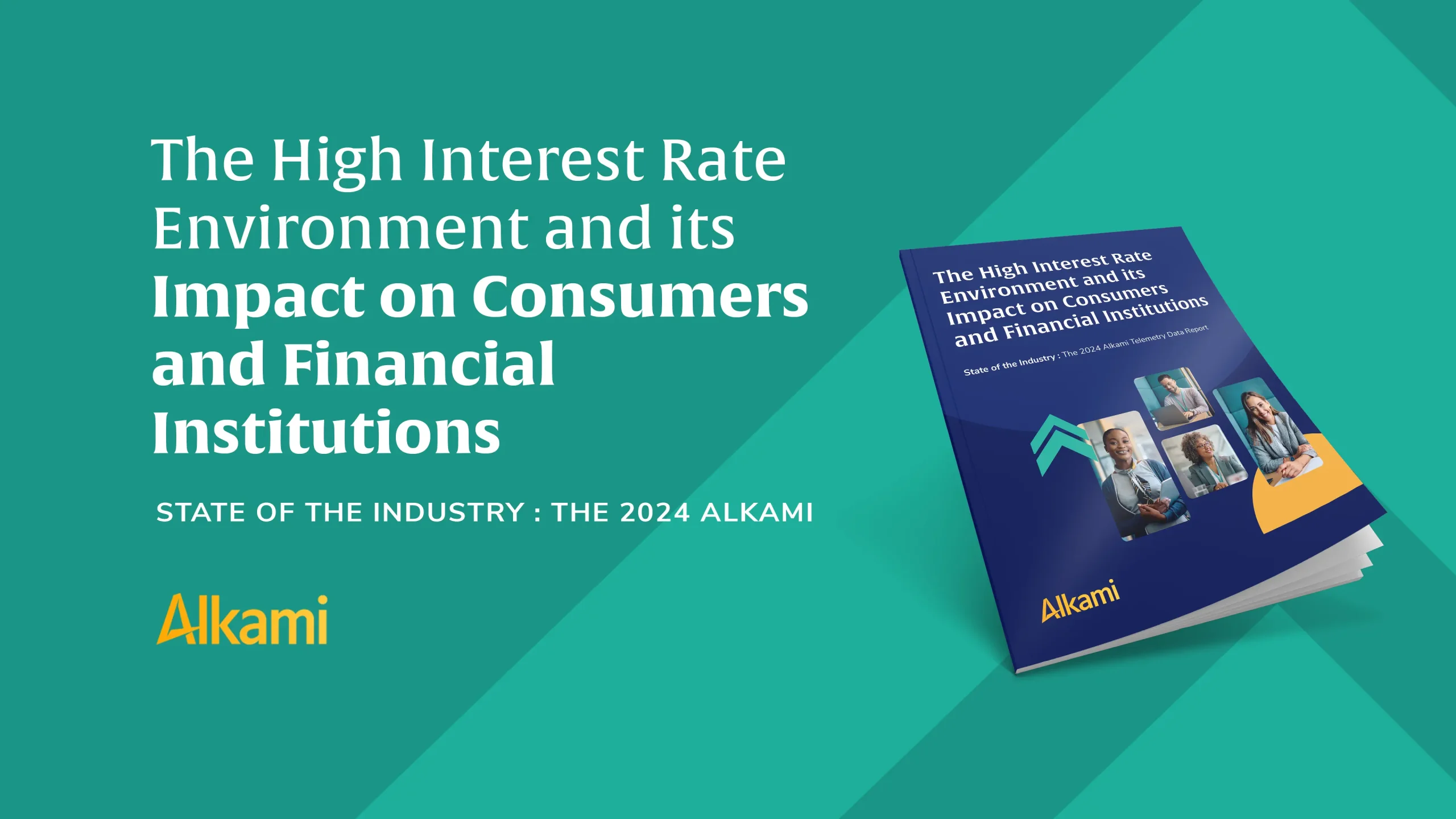
The rising interest rate environment, which hasn’t been seen in decades, is creating new pressure on consumers and financial institutions alike. The 2024 Alkami Telemetry Data Report provides multiyear trends of key deposit, loan, and payment products, based on an aggregated panel of more than 2.5 million account holders, to provide financial institutions with industry benchmarks against which to compare their own performance.
This report supplemented by an Alkami commissioned study, conducted through The Center for Generational Kinetics, assesses how the current macroeconomic environment has impacted attitudes and behaviors across the generations.
Housing market presents challenges for homebuyers and renters, with home equity line of credit (HELOC) originations peaking in 2022.
Sixty-seven percent of digital banking Americans say the rising interest rate environment has had a significant impact on their standard of living and 59% are living paycheck to paycheck.
The reality can be seen in rising housing market pricing, both in rent (where average monthly rent has increased 24.4% over the past four years, up to $971 per month in Q4 2023) and mortgages (where the confluence of rising home prices and interest rates resulted in the average home buyer affording 52% fewer square feet in 2023 than 2019).
Indeed, the American dream of owning a home is being challenged by younger generations, with 26% of millennials saying that buying a home hinders wealth building, as opposed to helping it.
For financial institutions, the result has been a 72.5% drop in mortgage originations from 2020 to 2023 and a 24.2% increase in HELOC originations over the same timeframe.
Supply chain challenges persisting through and following the pandemic, coupled with rising interest rates, resulted in car buyers paying 32.5% to 57.1% more per month for a used or new auto loan, respectively, from 2019 to 2023.
As financial institutions turned their attention to deposit acquisition, competition for CDs resulted in an 11.7x premium in interest rates for a 24-month CD opened in 2023 versus 2021.
The number of CD accounts opened saw a more than sixfold increase from Q4 2021 to Q4 2023, while the average term dropped 51.2% from 21 to 10 months over the same timeframe, as financial institutions, reluctant to commit to higher cost of funds for longer periods, began to offer attractive interest rates on shorter-term CDs.
The convergence of all of the above resulted in CD balances more than 82% higher at the end of 2023 versus 2021. For banks and credit unions, challenges are on the horizon for retaining these transient accounts, as 87.7% of CD balances held at the end of Q4 2023 will mature in Q4 2024.
Overall, average consumer deposit balances in checking, savings, money market, and CDs are higher today than they were in 2019, but it does appear that the higher prices consumers are facing is beginning to erode balances, and the mix of CDs as a percent of deposit accounts has increased at the expense of money market accounts.
The average monthly payment made towards credit cards has been increasing since 2020, reaching $2,376 by 2023, a 19% increase over pre-pandemic levels.
Though the average consumer’s total monthly payment to credit cards is up, the number of credit card payments has remained relatively flat, suggesting that, while consumers are paying more towards credit card bills than historically, they are not adding new cards to their wallets.
These converging trends represent an opportunity for financial institutions to recommend card consolidation to their institution’s own card, either debit or credit, along with financial wellness assistance to help those increasingly reliant on cards.
There were 5.17x more BNPL users in 2023 than in 2019. Nearly 60% of digital banking Americans who use online-only banks say that, in five years, BNPL transactions will exceed credit card transactions in the U.S., the highest of any primary financial provider tested.
2024 FI Perceptions Research, commissioned by Alkami, surveyed 150 unique banking platform decision makers/influencers across the U.S. to explore their digital banking provider perceptions and experience. Survey was fielded December 21, 2023 – January 26, 2024.
The Center for Generational Kinetics – National Research Study 2024, commissioned by Alkami included 1,500 U.S. participants ages 22-65 weighted to the 2020 US Census for age, gender, region, and ethnicity. Survey was conducted online from January 12, 2024, to January 30, 2024.
